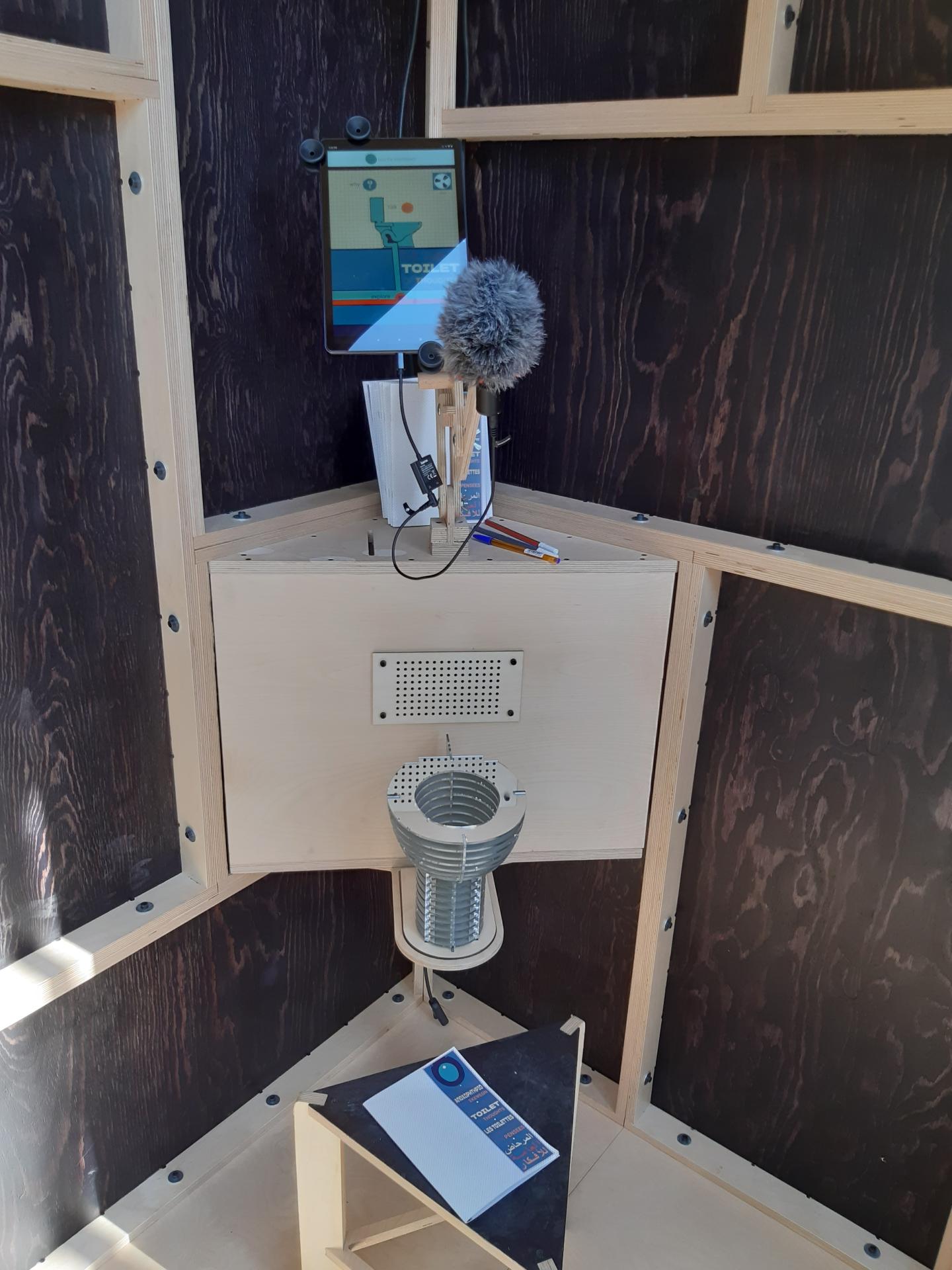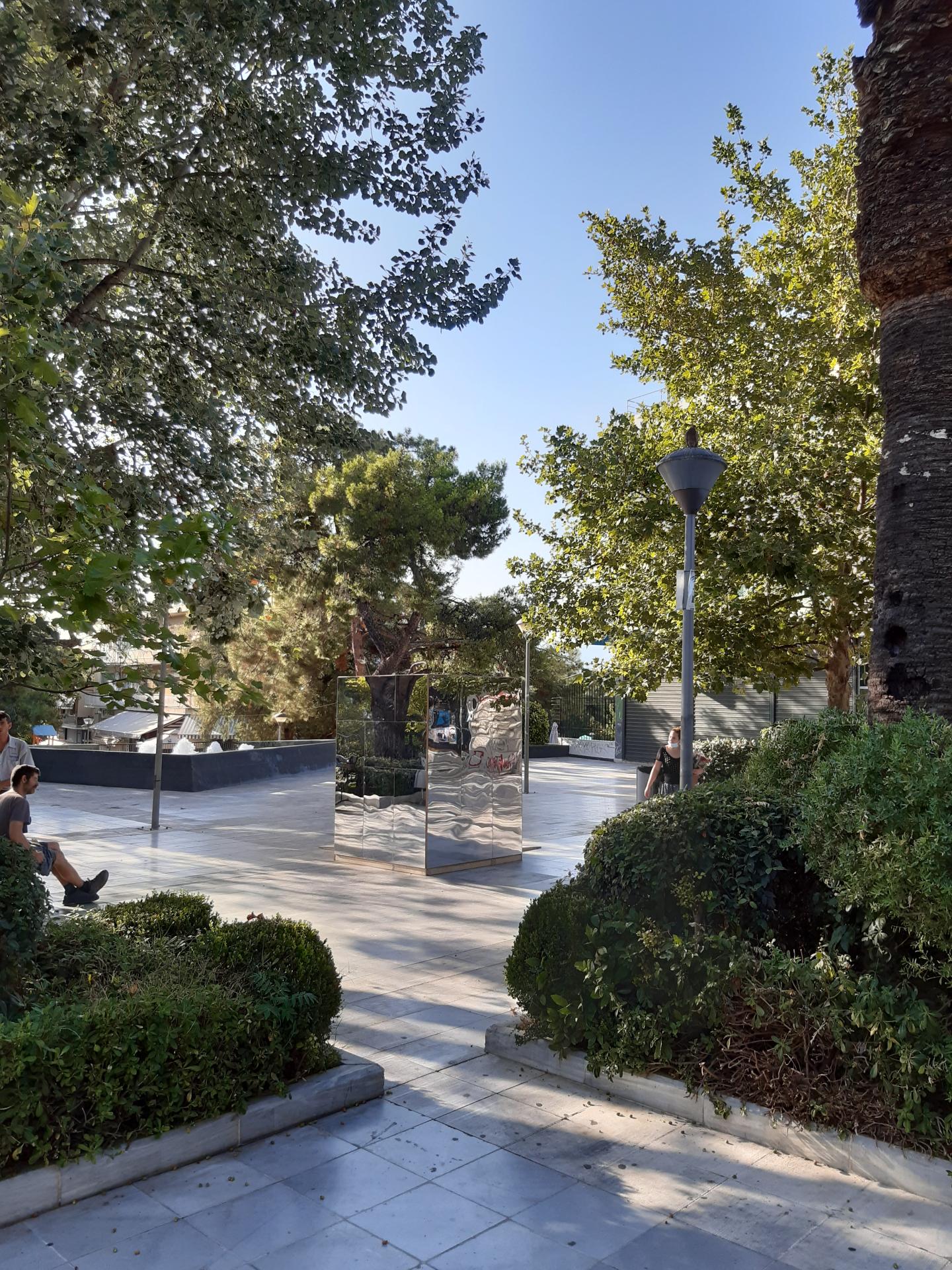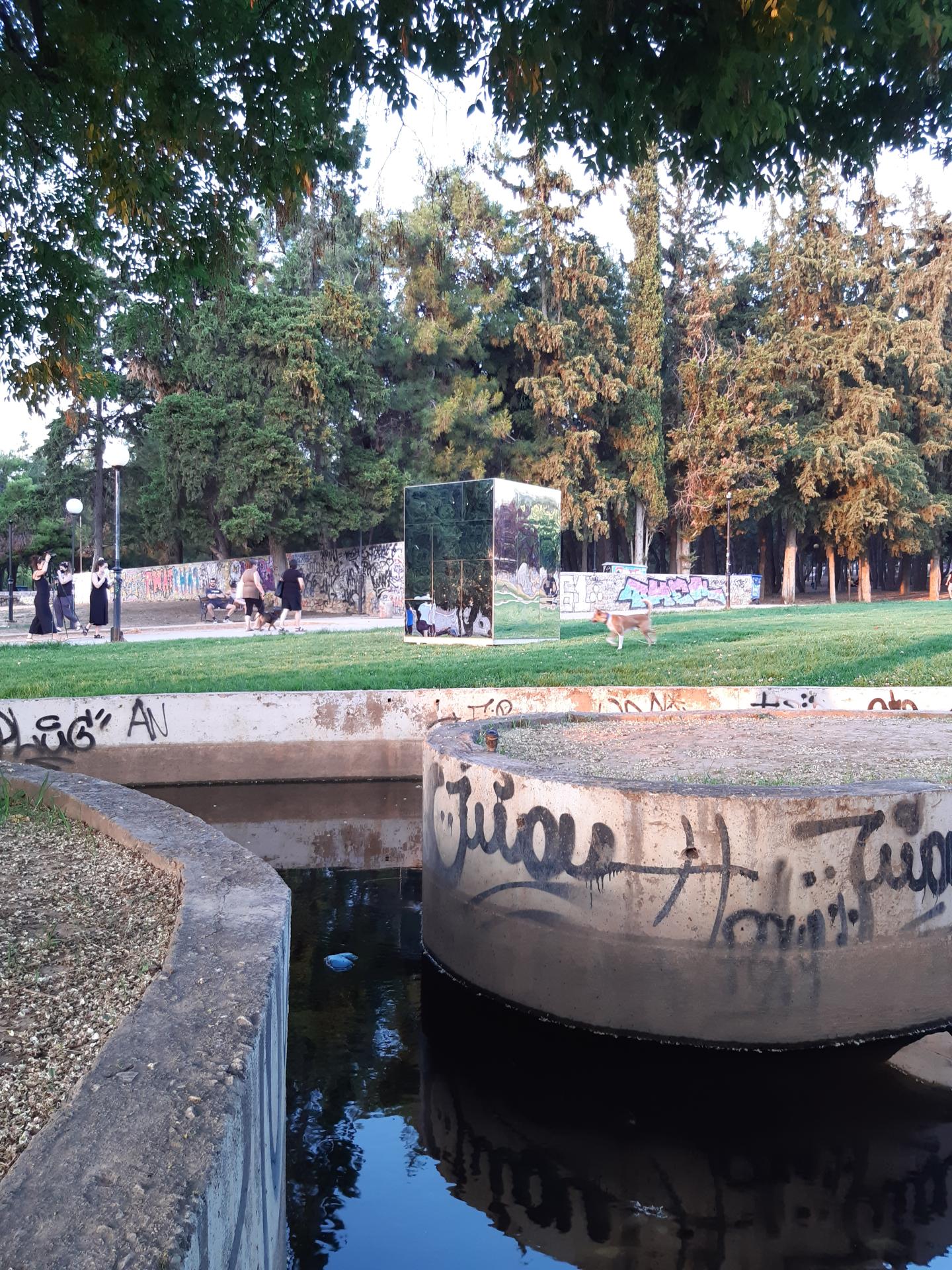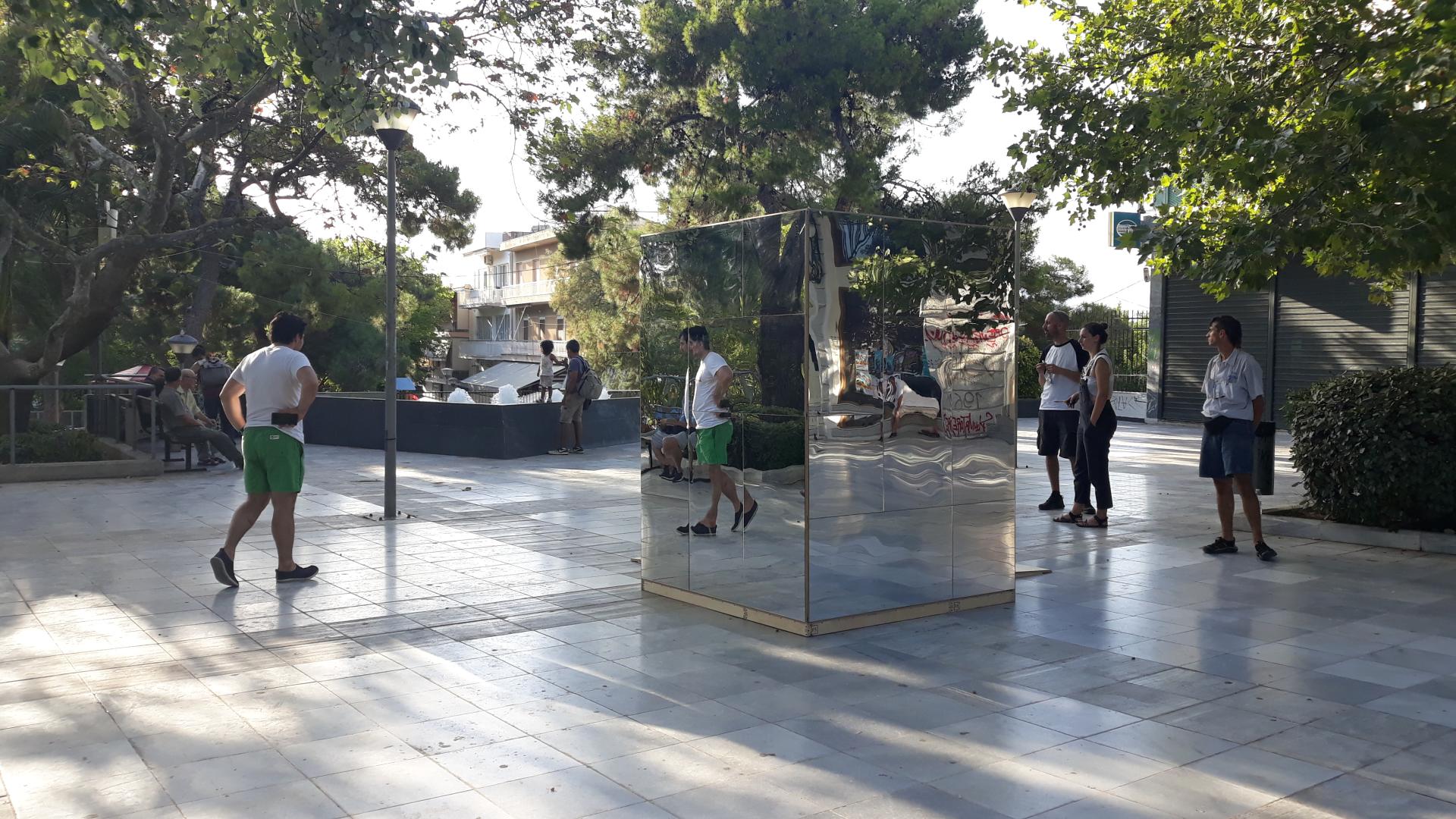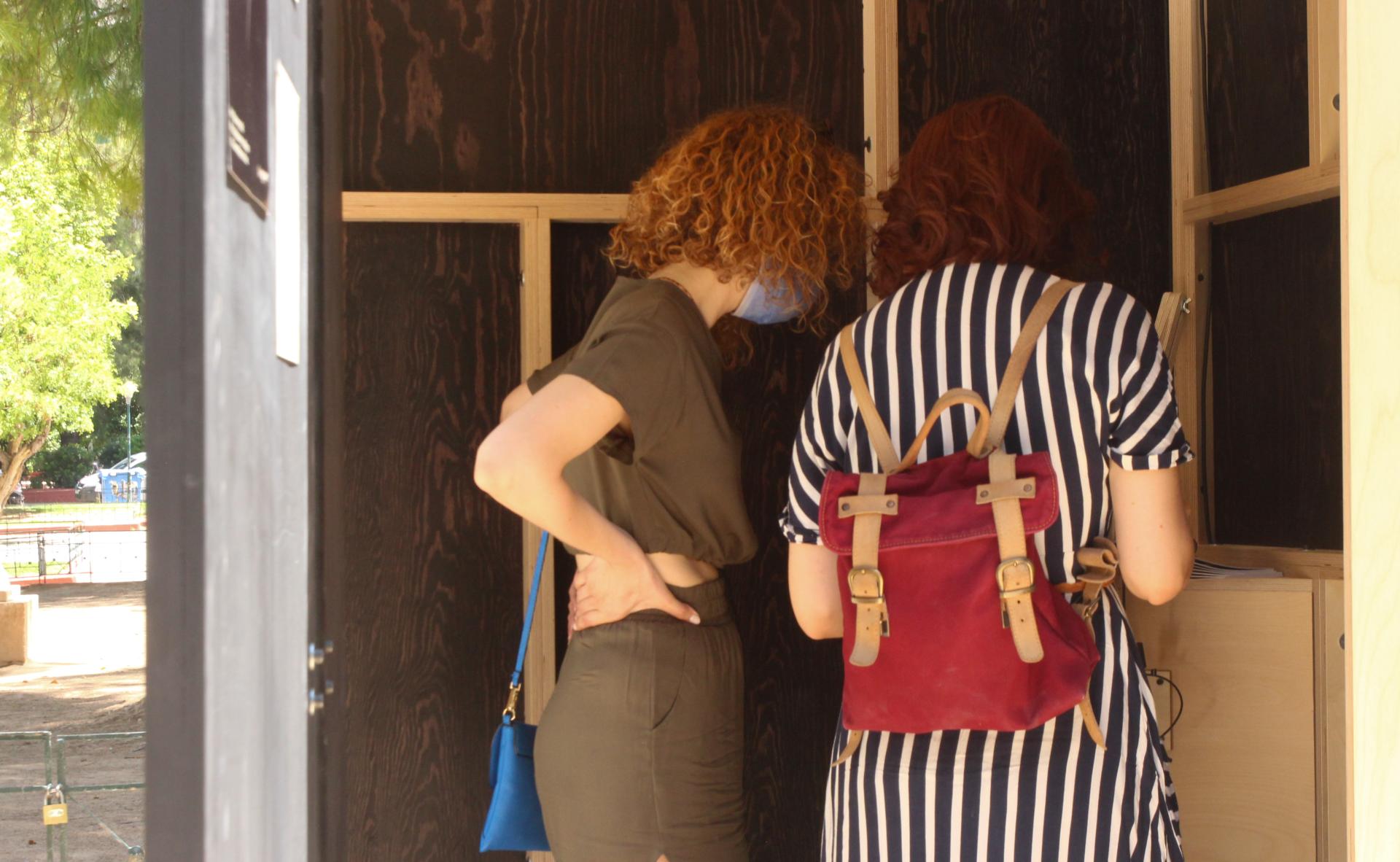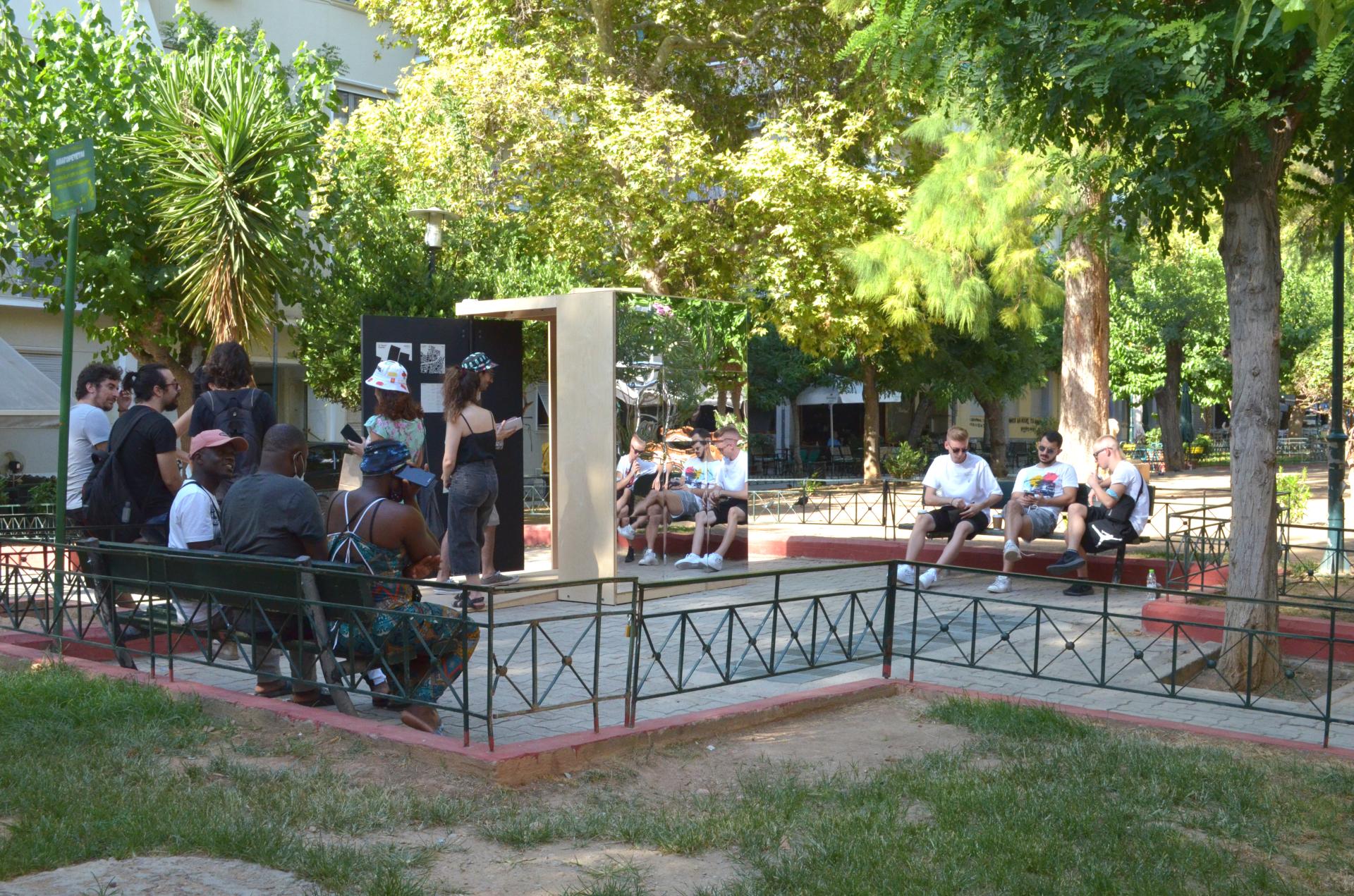Box for Expression
Basic information
Project Title
Full project title
Category
Project Description
Box for Expression is an attempt to co-create a ‘common space’ within the urban/rural public space. Physically, it is a modular, reusable and re-adaptable open infrastructure. It offers the possibility for users to add oral stories into the cloud, gradually forming a collective narrative of passengers. It aims to create an open-source and accessible infrastructure, focusing on the idea of the "commoning" at the intersection of digital civics, fabrication, social research and artistic practice
Geographical Scope
Project Region
Urban or rural issues
Physical or other transformations
EU Programme or fund
Which funds
Description of the project
Summary
The “Box for Expression” (BfE) project is an installation that supports storytelling and sharing experiences in the urban public space. It is a small scale modular/mobile infrastructure that can be installed in different parts of a city depending on the needs of each action. It is available to creative groups and organizations that are active in the field of oral history, arts or any kind of research in the public space. The “Public Toilet of Thoughts” (PToT) was the first use case scenario which settled in and appropriated the BfE during the summer of 2021 in Athens. The idea was created as an experimentation in-between research and art in order to explore how people could respond to the challenge of expressing and sharing feelings and experiences about the pandemic. Social distancing as a consequence of Covid-19 pandemic has escalated social isolation of contemporary metropolises. We wanted to create a symbolic space of reconnection between the passerby and the neighborhood, and also with the community that inhabits it. It challenged us to participate in a collective ritual, by confessing small fragments from our internal worlds. The installation was used in pop-up events (duration: 4-6 hours) in public spaces (parks and squares) of 4 different neighborhoods of Athens (Kypseli, Chalandri, Kesariani and Kolonos - as part of an advocacy event) and collected around 250 oral narratives. During the events, the users of the installation had the opportunity to listen to previous responses and to record or write their thoughts. This material gradually formed a collective audio archive of people’s feelings and experiences during the pandemic and right after the imposed lockdowns which is also presented in the website of the project along with a short documentary (https://boxforexpression.gr/case/use-case_01/). The experience of using PToT was accompanied by an artifact of a mirror-toilet and a small printed guide in the format of a fanzine in 4 different languages.
Key objectives for sustainability
The key objective of the project in terms of sustainability was to create a tool that will be easy to use in different contexts and open to new configurations relating to diverse needs of its users. The BfE, as a mobile infrastructure, is developed to be located temporarily in public spaces in order to support interaction with citizens. The physical infrastructure is constructed with plywood and it is designed to be (dis-)assembled within an hour with the use of basic tools without leaving any imprint in the surrounding environment, while its parts could be easily transported by a regular van. The digital infrastructure consists of an open source WordPress CMS and was developed to be used primarily through a tablet as a Progressive Web App (PWA). In this realm, the open design of the material aspect of the installation along with open-source WebApp used for crowd-sourcing narratives, facilitate the reusability and adaptability of BfE in order to support multiple use case scenarios. At the same time, all data is stored directly in the application’s database, giving the opportunity to future researchers or artists to access, archive and document the collected material on the website of BfE which is also open-source and free to host additional instances.
Key objectives for aesthetics and quality
The BfE, as a small scale project, has as its initial objective to investigate in efficient ways how an experience of an “eterotopia” could emerge in the public space in order to trigger citizens’ participation and/or expression. Building upon this crucial point, the aesthetic of the installation had a minimal approach in terms of design, having as core element the simple form of a wooden box which has walls on two sides and creates a sense of privacy to the user by adjusting the spinning door which is located in the corner of two other uncovered sides. The wooden walls consist of two types of assembling modules which are combined and create a grid-pattern, while at the same time they are externally covered by mirrors in order to be aesthetically aligned with the basic concept of the installation. In that way, the box becomes one with the surrounding environment because of the reflecting cityscape and the user as she/he approaches the infrastructure - creating to her/him the illusion of becoming invisible, giving in parallel the opportunity to share feelings or experiences in a “safe space”. In addition to that, a printed guide with artwork related to the period of confinement and a small artifact of a toilet-mirror were designed to support the implementation of PToT (first use case of BfE). In these two additional objects, aesthetic elements of collage and ready-mades of dadaism tradition, were integrated in order to create a fully-featured atmosphere of a “toilet of thoughts” ready-to-use.
Key objectives for inclusion
The core objective and the starting point of the project was public participation and citizens’ engagement in the public space. Originated within the restricted condition of the lockdowns, BfE and its use case scenario the PToT, was a way to re-imagine social interaction and reflection in the new “normality”. Focusing on the creation of a process of sharing and relief from all the accumulated and/or unexpressed thoughts, fears, and emotions of our times, the BfE formed a condition where the "physical" and the "digital" would creatively meet in the context of a "hybrid" collective, common space within the public space.
A crucial aspect during the development of the project was the aspect of cultural inclusion. Many neighborhoods around the center of Athens, such as Kypseli, are characterized by high levels of social diversity and multiculturalism, a fact tightly connected to the multiple "migration waves'' of the last decades. Thus, one of our main concerns during the phase of design was to form an interface that would be inclusive and accessible (in terms of language and cultural background) to as many residents as possible. Consequently, all the digital and printed material were translated in 4 languages commonly used around the centre of Athens (greek, english, french and arab), to engage the majority of possible users. On a physical level, one main concern was for the infrastructure to be accessible to people experiencing disability. For this reason, a ramp was placed in the entrance of the infrastructure, and all the infrastructure can be used by people disregarding the height (covering the needs of participation, to people of various heights, children, wheelchair users, elderly people and mothers with baby carriage).
Finally, by the open availability of the physical and digital infrastructure, and our plans of establishing a procedure to allow the use of BfE as a common, we hope to reassure the affordability of this project.
Results in relation to category
After one and a half year of subsequent and long-lasting confinement measures, the societies faced new challenges in terms of social relations and reproduction. Being isolated in our private spaces and having as the only field of interaction the digital space of social media, it was emergent to bring in the forefront new ways to correlate with public spaces and the communities which inhabit them. It is generally accepted that the experience of the pandemic had a big impact on our social behavior and reflexes. In this social context, the BfE is an experimentation of how individuals could regain a sense of belonging, without feeling exposed. The space generated as an “exception” through the PToT, in different districts of the city of Athens during the pop-up events, was an opportunity in the public space to speak and also to listen to narratives of previous users of the installation, providing in that way a transformative experience. In this realm, the process of exchanging thoughts and feelings through a physical/digital intermediate, which is at the same time connected to a specific locality, revealed great potential in becoming aware that “I am not alone” in this city. People participated in this collective assemblage of stories about stressful situations, depression, survivor techniques in conditions of social distancing, new approaches of the built environment and exploration walks in the neighborhood, proved that even in extreme conditions societies maintain a mental shared space which is important to be accessible. Consequently, BfE is a tool to create this cultural archive which reflect the historical juncture and in parallel constitute a passage to re-enter a collective reality in times of social isolation.
How Citizens benefit
The project of BfE was funded in terms of the program Actors for Urban Change. Having as core element the challenge of creating a cross-sectoral cooperation between a public university (Department of Cultural Technology and Communication - Image, Sound and Cultural Representation Lab (ISCRL)), a non-for-profit organization (Open Lab Athens) and a for-profit cooperative (Ludd Lab), the whole project development was structured on a multi-level (and distant because of lockdown measures) co-design process. Each partner provided knowledge from different scientific and professional fields and formed a common ground of interaction, where all phases and parts of the project were discussed to make decisions.
The whole process of cooperation and development of the project could be conceived as an open-ended prototype of creating a “research-artistic” infrastructure as a common. The interaction among partners generated a field of mutual understanding and in that way revealed the potential of developing a wider community around BfE. Consequently our overall intention was to think beyond the typical conception of sustainability by bringing in the forefront a more communal perspective, where a material common is shared and used to generate new trajectories of thought and creation between citizens and different actors of the city.
Physical or other transformations
Innovative character
Firstly, the idea of a BfE proposes a novel way to conduct social research and collect data in the public space by developing an infrastructure in the intersection of science and art. Our main argument in the first use case scenario as a PToT, was that we should broaden our perspectives relating to traditional methods and theories of approaching social phenomena. Following this trajectory, the creation of an installation and the opportunity of providing a fully-featured experience about the field of interest, triggered the passers-by to participate and respond in exceptional ways, engaging also people of different age groups. In addition to that, the documentation video (https://www.youtube.com/watch?v=_JzF0AEBZ2g) created during the public events revealed that an artistic approach on the data through an ethnographic documentary, could be exemplary on how the findings of a research could be accessible to wider audiences. Furthermore, the space generated as “an exception” or “eterotopia” in the public space during the pop-up events, proved the capacities of such an installation to create a personal safe space in the public which at the same time connected the user to the surrounding community. Being mediated by a digital application and protected by mirrors from the gaze of the passer-by, citizens were invited to talk, to think and to express personal insights about how theirselves, the society or the city changed in the last 2 years. In this realm, the installation and its questionable form - externally covered by mirrors, reflecting at the same time the cityscape - could be conceived as a novel way or a tool for activating citizens participation. In parallel, the material collected during the events proved that - with basic digital means and the integration of an artistic approach in terms of concept and through artifacts or artworks of inspiration - it was possible in limited time to create a cultural archive for ongoing transformations our societies are facing.
Learning transferred to other parties
Since the first steps of the project, all our focus regarding communication was on using the proper ways to reassure the viability and the further development of the project by the community, as the project of BfE is a common, created by the community and for the community. Thus, all the work done is freely available online, a documentary of the first usage scenario is also available online and the source code of web App used in the tablet of the installation is already available on gitlab (https://gitlab.com/openlabathens/box-of-expression). Moreover, all the data and the activities of BfE can also be found in the project page. Based on the clear and freely available documentation of the project, the digital content which exemplifies in just a few minutes a complete scenario of usage, and our active involvement in its maintenance and development, makes us feel, that we have created a good basis for watching this project grow, evolve, and provide voice to more and more citizens in neighborhoods all around Europe.
Finally, by recently reassuring the existence of grants that could support a trip in another country on Europe in case there is a need to assist other teams on adopting the BfE, make us believe that once there is an interest, we have all the tools needed to transfer our experience and learnings of BfE, and support its development.
Although an ambitious saying, the way we really approach BfE is as an alive organism, or a parasite which is ready to grow wherever there is a small space of survival for it, due to the ease of silent integration in any public space, that its external design provides.

